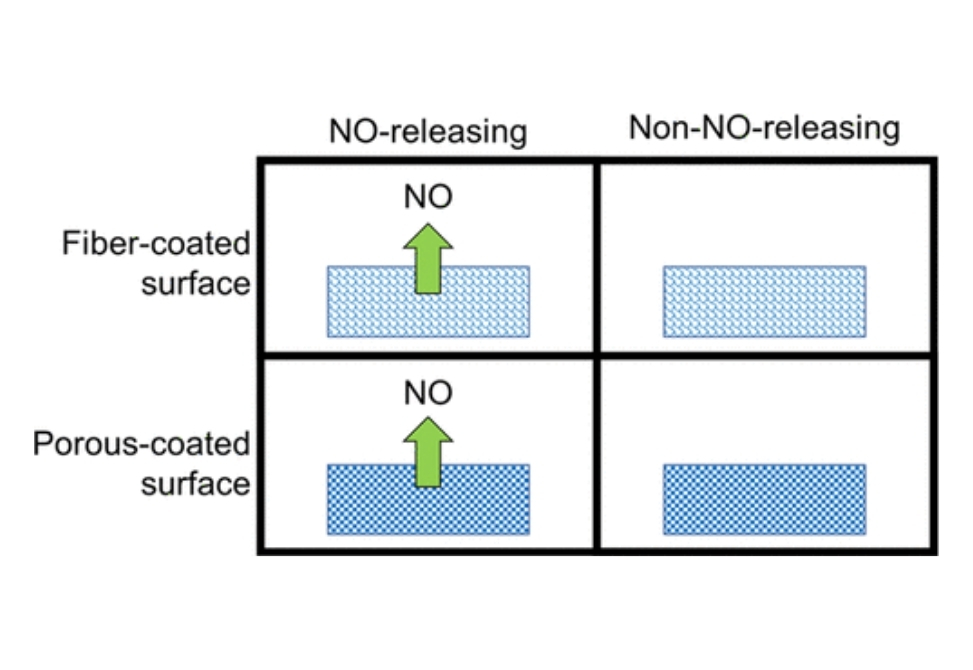Combination of Nitric Oxide Release and Surface Texture for Mitigating the Foreign Body Response
Abstract
The tissue response to polyurethane (PU)-coated implants employing active and/or passive FBR mitigation techniques was evaluated over a 28 day study in a diabetic swine model. Active FBR mitigation was achieved through the sustained release of nitric oxide (NO) from a mesoporous silica nanoparticle-doped PU coating. Passive FBR mitigation was achieved through the application of a foam- or fiber-based topcoat. These topcoats were designed to possess topographical features known to promote tissue integration with foam-coated implants having pore sizes of approximately 50 μm and fiber-coated implants consisting of fiber diameters of less than 1 μm. Nitric oxide-release profiles were minimally impacted by the presence of either topcoat. Inflammatory cell density and collagen density at the implant–tissue interface were assessed at 7, 14, 21, and 28 days following implantation. Nitric oxide-releasing implants had significantly lower inflammatory cell density and collagen density than non-NO-releasing controls. The presence of a topcoat did not significantly impact inflammatory cell density, though top-coated textured implants resulted in significantly lower collagen density, irrespective of NO release. Overall, coatings that combine NO release with surface texture demonstrated the greatest potential for tissue-based biomedical device applications.
Citation
Combination of Nitric Oxide Release and Surface Texture for Mitigating the Foreign Body Response
Maggie J. Malone-Povolny, Taron M. Bradshaw, Elizabeth P. Merricks, C. Tyler Long, Timothy C. Nichols, and Mark H. Schoenfisch. ACS Biomaterials Science & Engineering 2021 7 (6), 2444-2452
DOI: 10.1021/acsbiomaterials.1c00022


